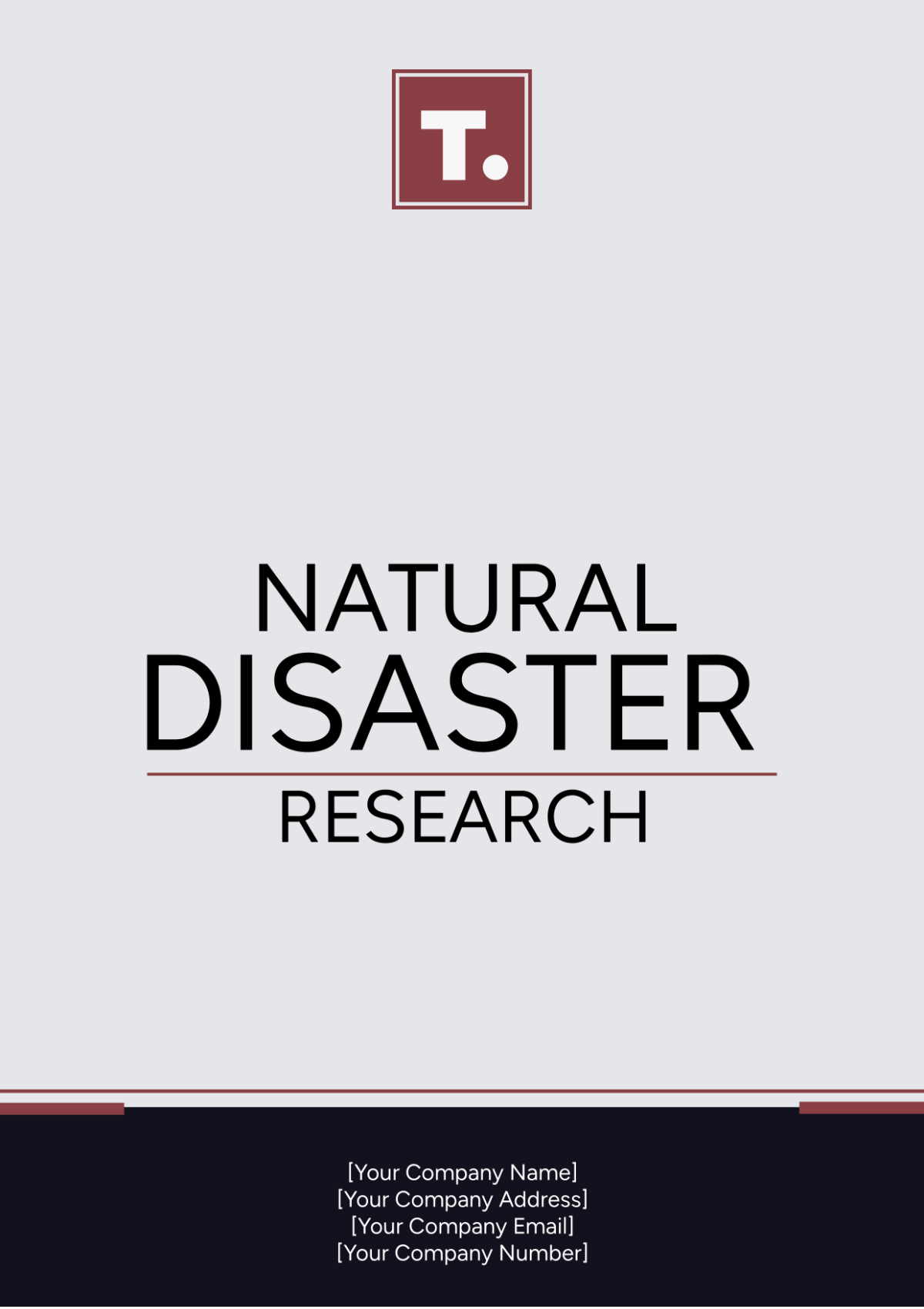Natural Disaster Research
Research by: [YOUR NAME]
Organization: [YOUR COMPANY NAME]
I. Introduction
This research paper explores the patterns, impacts, and mitigation strategies associated with natural disasters globally. It aims to lay down a comprehensive framework addressing both the human and economic costs of such events and strategic responses that can minimize these impacts.
The research will scrutinize different types of natural catastrophes, focusing on earthquakes, hurricanes, floods, wildfires, and droughts, which have marked profound implications for humanity and the environment. It will also suggest adaptive and preventive measures tailored to decrease vulnerability and enhance resilience.
II. Overview of Major Natural Disasters
A. Types of Natural Disasters
Earthquakes
Hurricanes
Floods
Wildfires
Droughts
B. Historical Data and Statistics
Understanding the history and frequency of major natural disasters provides insight into potential future risks and preparedness needs. Below is a table compiling the occurrences over the past decade:
Type of Disaster | Number of Occurrences | Affected Population | Economic Losses (USD) |
|---|
Earthquakes | 152 | 1.2m | 200 billion |
Hurricanes | 101 | 800k | 180 billion |
Floods | 260 | 3.5m | 120 billion |
Wildfires | 88 | 500k | 70 billion |
Droughts | 74 | 2.5m | 30 billion |
III. Impact Analysis
A. Economic Impact
The economic ramifications of natural disasters can be staggering, leading to billions of dollars in recovery costs. Industries most affected include insurance, agriculture, and real estate. The indirect economic consequences often include increased insurance premiums and decreased property values, impacting economies on a global scale. Direct impacts, however, entail the immediate cost of damage to infrastructure and services, posing serious challenges to the fiscal budgets of affected regions.
B. Human and Environmental Impact
Natural disasters take a profound toll on human lives, displacing communities, causing mortality and morbidity, and psychological trauma. Environmental impacts include loss of biodiversity, soil erosion, and pollution of air and water bodies. The interplay of human and environmental elements underscores the complexity of disaster impacts, requiring multi-faceted approaches for effective management and recovery.
IV. Mitigation and Adaptation Strategies
A. Policy Recommendations
Effective disaster management strategies are critical in reducing the vulnerability of populations at risk. Policies should focus on robust building codes, sustainable land use planning, and investment in early warning systems.
B. Technology and Innovation
Advancements in technology and innovation hold promise for improving disaster preparedness. Geographic Information Systems (GIS), Artificial Intelligence (AI), and drone technology can aid in risk assessments, real-time monitoring, and delivering aid to inaccessible regions.
V. Conclusion
This research outlines the imperative need for integrated approaches combining policy, technology, and community engagement to address the severe impacts of natural disasters. By adopting a multi-disciplinary approach, societies can enhance their resilience and reduce their vulnerability to future disasters.
VI. References
Global Natural Disaster Assessment Report
Journal of Environmental Management and Safety
International Journal of Disaster Risk Reduction
Economic Implications of Natural Disasters
Technological Advances in Natural Disaster Response
Research Templates @ Template.net






























